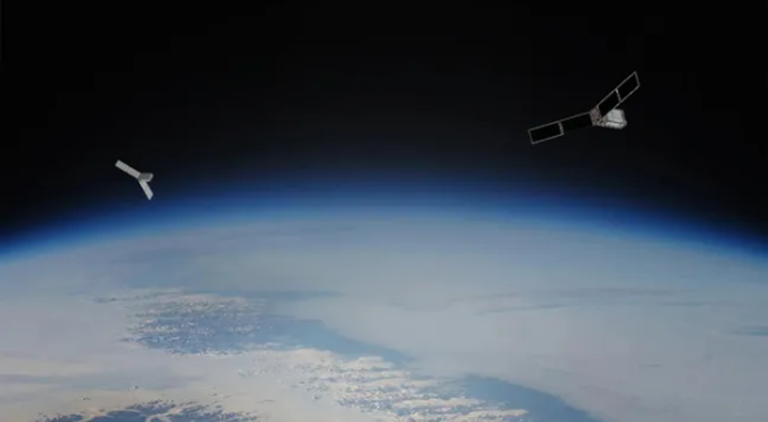Climate Change Experiments: NASA’s PREFIRE CubeSats Start Groundbreaking Mission
Key Takeaway:
NASA’s PREFIRE mission, comprising two CubeSats launched on Rocket Lab’s Electron rocket, aims to study Earth’s polar regions and improve climate models. The data collected will help predict changes in ice, sea levels, and weather patterns in a warming world.
Summary
- Mission Overview: PREFIRE’s goal is to understand how Earth’s poles regulate the planet’s energy balance.
- Launch Details: Two CubeSats launched from Māhia, New Zealand, with the second launch on June 5, 2024.
- Scientific Objectives: Study far-infrared radiation emissions from the Arctic and Antarctic.
- Technological Innovation: Use of miniaturized thermal infrared spectrometers.
- Impact: Improved climate and weather prediction models.
- Collaboration: Joint effort between NASA, University of Wisconsin-Madison, and Blue Canyon Technologies.
Introduction
NASA has embarked on a pioneering mission to study the impact of climate change on Earth’s polar regions. This mission, known as PREFIRE (Polar Radiant Energy in the Far-InfraRed Experiment), utilizes two small CubeSats equipped with advanced thermal infrared spectrometers. Launched on Rocket Lab’s Electron rocket from Māhia, New Zealand, these CubeSats aim to provide crucial data to enhance our understanding of climate dynamics and improve predictive models.
PREFIRE Mission Overview
The PREFIRE mission is designed to fill a critical gap in our understanding of how Earth’s poles influence the global climate system. By measuring far-infrared radiation emitted from the Arctic and Antarctic, scientists can gain insights into the energy balance of our planet. This information is vital for predicting changes in ice cover, sea levels, and weather patterns as the climate continues to warm.
Launch Details and Mission Timeline
The PREFIRE mission consists of two CubeSats, each about the size of a shoebox. The first CubeSat was launched on May 25, 2024, followed by the second on June 5, 2024. Both launches took place from Rocket Lab’s Launch Complex 1 in Māhia, New Zealand. Following a 30-day checkout period, during which engineers and scientists will verify the CubeSats’ functionality, the mission is expected to operate for ten months.
Table 1: Launch Details
| Event | Date | Location |
|---|---|---|
| First CubeSat Launch | May 25, 2024 | Māhia, New Zealand |
| Second CubeSat Launch | June 5, 2024 | Māhia, New Zealand |
| Mission Duration | 10 months | Near-polar orbits |
Scientific Objectives
The primary scientific objective of the PREFIRE mission is to measure far-infrared radiation from Earth’s polar regions. The poles act as radiators, shedding much of the heat absorbed at the tropics back into space. Understanding this process is crucial for modeling the Earth’s energy budget and predicting climate change impacts.
Technological Innovation
Each PREFIRE CubeSat carries a thermal infrared spectrometer, an instrument designed to measure infrared wavelengths. The spectrometers use specially shaped mirrors and sensors, miniaturized to fit within the compact CubeSat frame. These advanced sensors are more sensitive than previous instruments, allowing for more precise measurements.
Impact on Climate and Weather Models
The data collected by the PREFIRE mission will enhance our understanding of how polar regions contribute to Earth’s overall energy balance. This information will improve the accuracy of climate and weather prediction models, leading to better forecasts and more informed decision-making.
Table 2: Expected Impacts of PREFIRE Data
| Area of Impact | Description |
|---|---|
| Sea Level Rise | Improved predictions of melting ice and rising seas |
| Weather Patterns | Better understanding of polar influence on weather |
| Snow and Ice Cover | Accurate tracking of changes in polar ice sheets |
| Climate Models | Enhanced models for long-term climate predictions |
The PREFIRE mission is a collaborative effort involving several key partners. NASA’s Jet Propulsion Laboratory (JPL) manages the mission, with the University of Wisconsin-Madison responsible for data processing. Blue Canyon Technologies built the CubeSats, while Rocket Lab USA Inc. provided the launch services. The mission is part of NASA’s Venture-class Acquisition of Dedicated and Rideshare (VADR) launch services contract.
The PREFIRE mission represents a significant step forward in climate research. By providing detailed measurements of far-infrared radiation from Earth’s polar regions, it will contribute to a more comprehensive understanding of the climate system. This knowledge is essential for developing effective strategies to reduce and adapt to the impacts of climate change.
NASA’s PREFIRE mission is a groundbreaking effort to study the far-infrared radiation emitted from Earth’s polar regions. The data collected by the two CubeSats will enhance our understanding of the planet’s energy balance and improve climate and weather prediction models. This mission exemplifies the power of collaboration and technological innovation in advancing our knowledge of climate change and its impacts on Earth.
For additional information about PREFIRE, please visit:
https://science.nasa.gov/mission/prefire/
Hashtags:
#NASA, #PREFIRE, #ClimateChange, #CubeSats, #PolarResearch, #EarthScience, #InfraredRadiation, #ClimateModels, #EnvironmentalScience


